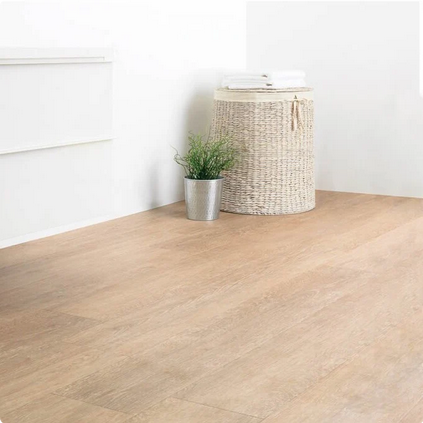
Author, Written by: P. Hirani (Wood flooring Expert)
When shopping for new floors, you’ll often see the terms waterproof and water resistant on product labels. At first glance, they might sound the same, but there is a big difference between the two. Understanding these differences can help you avoid costly mistakes and choose the right flooring for your space, especially in moisture prone areas like kitchens, bathrooms, and basements.
What Does Waterproof Flooring Mean?
Waterproof flooring is designed to completely block water from seeping through the surface, the core, and the edges. No matter how much liquid spills or how long it sits, the flooring will not absorb moisture or get damaged.
Common types of waterproof flooring include:
-
Luxury Vinyl Plank (LVP) and Luxury Vinyl Tile (LVT): These feature rigid, non porous cores that do not swell or warp when exposed to water.
-
Tile and Stone Flooring: Naturally waterproof and highly durable for wet areas.
-
Certain Hybrid Floors: Some brands offer hybrid flooring with waterproof cores.
Best suited for: Bathrooms, basements, kitchens, laundry rooms, and homes with pets.
What Does Water Resistant Flooring Mean?
Water resistant flooring can handle small spills and moisture, but only for a limited amount of time. While the surface may repel water, prolonged exposure can lead to swelling, warping, or damage, especially at the seams.
Common types of water resistant flooring include:
-
Laminate Flooring: Many modern laminates come with water resistant coatings but are not fully waterproof.
-
Engineered Wood Flooring: Can handle minor spills but is still vulnerable if exposed to standing water.
-
Some Vinyl Options: While resistant, not all vinyl products are truly waterproof.
Best suited for: Living rooms, bedrooms, dining areas, and hallways where spills are minimal.
Key Differences at a Glance
How to Choose the Right Option
-
For families with kids or pets: Go with waterproof options like vinyl plank. Accidents and spills are easier to manage.
-
For style and budget balance: Water resistant laminate or engineered wood provides beautiful looks with some protection.
-
For high moisture zones: Bathrooms, laundry rooms, and basements should always have waterproof flooring.
-
For drier areas: Living spaces and bedrooms can safely use water resistant floors.
Tips for Protecting Your Floors
-
Clean spills immediately, no matter the type of flooring.
-
Use mats and rugs in high moisture zones.
-
Check the manufacturer’s warranty to confirm if “waterproof” applies to the entire plank or just the surface.
Final Word
The terms waterproof and water resistant might sound similar, but the difference is crucial when planning your flooring project. Waterproof flooring gives you complete peace of mind in moisture heavy areas, while water resistant options work best in drier spaces with only the occasional spill. Knowing the distinction helps you make a smart investment that fits your home, lifestyle, and budget.
About Author:
Peter H. is a flooring product expert who knows all about different types of flooring materials. He shares his knowledge in blogs to help readers make the best choices for their spaces.
